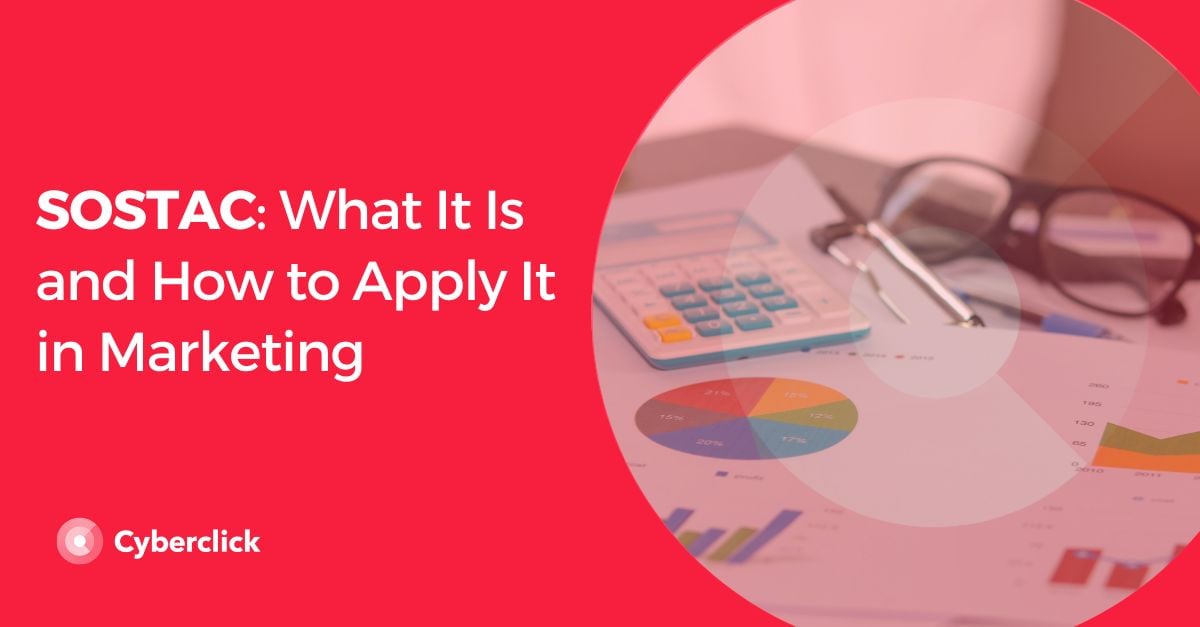The SOSTAC methodology, which stands for Situation, Objectives, Strategies, Tactics, Action and Control, refers to the stages of a project. It has become a very useful tool in digital marketing because of the information it provides when it comes to organizing a strategy. Let’s take a closer look!

What Is SOSTAC?
The SOSTAC methodology is a strategic planning model for digital marketing campaigns that allows us to organize them in a very detailed, meticulous way. In addition to its effectiveness, the SOSTAC methodology is widely used because it is one of the easiest models to apply.
The SOSTAC methodology allows you to identify and define the variables within a digital marketing campaign. Each of the stages provides information and serves as a guide to the next one. Depending on what happens in one stage, modifications can be made to the next stage in order to achieve your goals.
The 6 Stages of SOSTAC
In order to better understand the SOSTAC methodology, let’s break down the six stages that it consists of.
Situation
The first stage of the SOSTAC methodology is analyzing the situation. In this part, you must determine who you are as a brand, what you do, how you interact with the public, customers, suppliers, etc.
In order to do this part well, consider the following steps:
- Perform a SWOT analysis, which consists of detecting the strengths, weaknesses, opportunities, and threats of the brand.
- Define and identify your customers and analyze the way they interact with the brand
- Analyze the competition to see what kinds of strategies they carry out, how they address their target audience and customers. And, above all, what are the main differences.
- Analyze the channels used to reach the target audience and determine which is the most effective.
By doing this, you will be able to set realistic objectives for your brand.
Objectives
In the second stage of the SOSTAC methodology, you’ll need to determine the main objective of the strategy. In order to do this, SMART (Specific, Measurable, Attainable, Realistic and Time Bound) objectives can be used.
For an objective to be specific, it must clearly answer the questions of what, where, when, how and why. In addition, the objective must be measurable, which means that it should be possible to quantify the benefits in a concrete way.
It is also important that the objective is attainable. If the work has been done well in the previous stage, at this point it should be possible to determine how far the company can go and what it can achieve in a given time. This will avoid you making an investment that the brand cannot afford in order to achieve objectives that, at that moment, are utopian.
Finally, it is necessary to determine how much time the entire team needs to achieve the goal.
Strategy
The situation of the brand is clear and the objectives have been decided, so now it is time to design the strategy that you will follow to achieve them. A route must be drawn up to indicate the path to follow to achieve your goals.
There are many types of strategy, such as digital marketing, content marketing, segmentation, brand positioning, etc. so choose the one (or ones) that can best help you achieve your objectives.
Tactics
Once the strategy has been determined, the tools that will be used to achieve the objectives must be chosen. These tools or tactics include everything from an optimized website to advertising on social media to email marketing. There are many options, but they should always be chosen with a clear understanding of the objectives of the strategic plan.
Here are some tactics that can be followed:
- SEO: improving SEO positioning is a very useful way to stand out from the competition. This tactic is closely related to content creation, although any element that appears on your website must be optimized for positioning.
- PPC campaigns: advertising can be a great way to reach your target audience, so it is always a good idea to dedicate part of your budget to paid ads on search engines or social networks.
- Email marketing: through email you can reach customers and maintain a relationship with them. It is a tool with high CTR, open rates, and conversions, so it should not be forgotten.
Actions
At this stage, it’s time to execute your strategic plan. It is essential to have both the necessary tools and a skilled team to carry everything out in an effective and professional manner.
It is here that the hardest work begins. In order not to get lost, it is important to answer the 5Ws: Who, What, When, Where, Why, and How? Regardless of the channel(s) used in your strategy, answering these questions is key to success.
Control
The last stage, control, is also important, since it is where, through quantifiable data, the performance of the strategic plan is determined. This data, in addition to providing insight into results, provides information on the direction the strategy should take. In other words, if there is anything that needs to be changed in order to improve.
This part must be taken very seriously, because if the results are not as expected, partial or total modifications will need to be made in order to reach your objective.
Why You Should Use SOSTAC to Create an Effective Campaign
There are several reasons to use the SOSTAC methodology. Let’s look at a few:
-
It helps determine your goal. Knowing the type of audience you are targeting and having information about it helps you choose strategies and actions that attract the attention of this audience in a much more effective way. Additionally, you can offer them much more personalized attention since you know what they need, what they want, what their concerns are etc.
-
It allows you to determine your objectives and the tools that are available, which helps you use your resources effectively.
-
It requires you to decide on the marketing channels and materials that will be used, and to look at how to use them in the most optimal manner.
-
With all the information obtained by researching, analyzing, and planning, you can design a strategy that will get you the best results
Licenciada en Publicidad y Relaciones Públicas por la UAB. Digital Marketing Strategist en Cyberclick.
Degree in Advertising and Public Relations from the UAB. Digital Marketing Strategist at Cyberclick.






Leave your comment and join the conversation